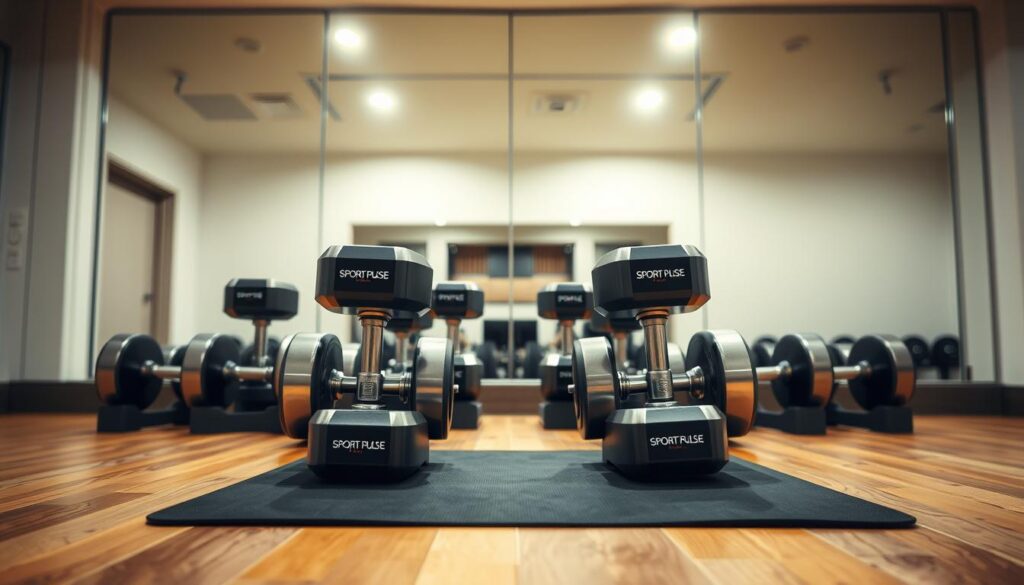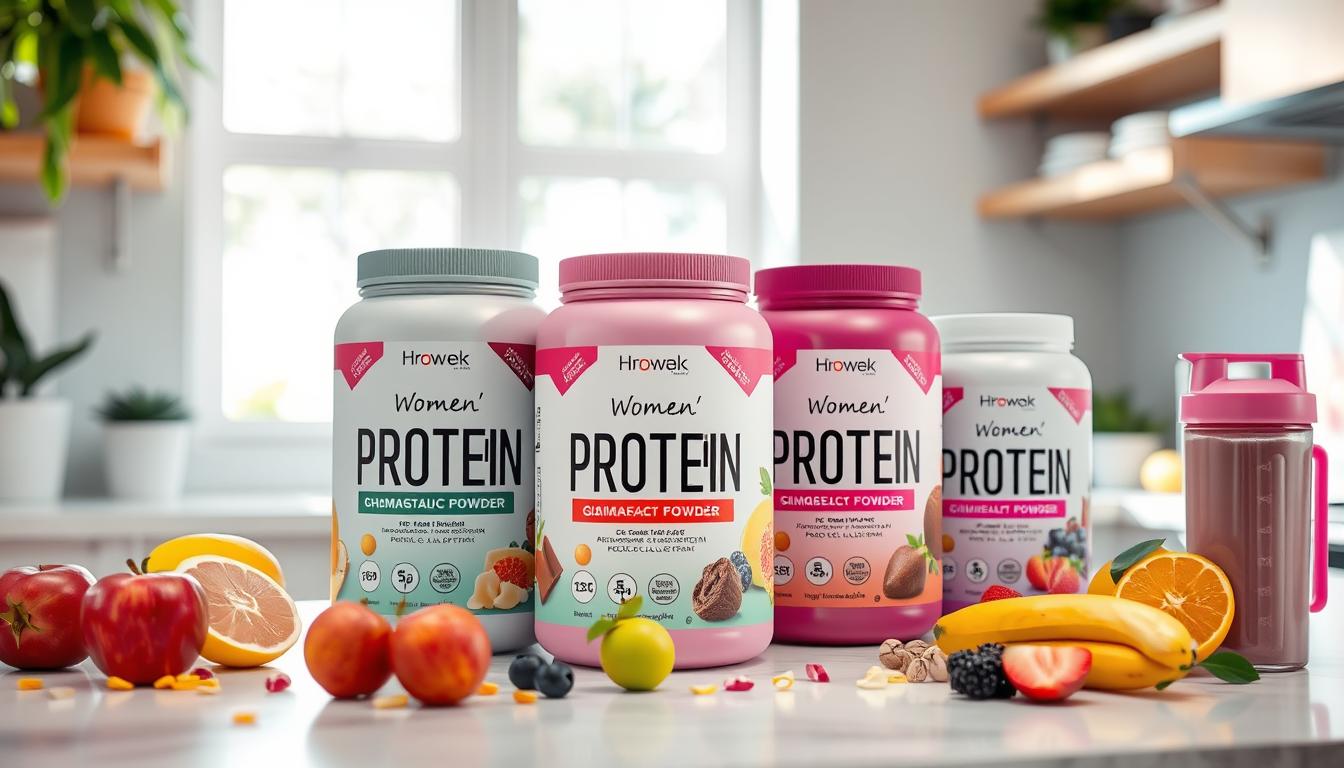Building muscle requires dedication and a well-structured training plan. A surprising fact is that resistance training can increase muscle mass by 1-3% per month.
This significant growth not only enhances aesthetics but also improves overall health by increasing lean muscle mass, addressing strength imbalances, and improving bone density.
To achieve optimal results, it’s crucial to understand the fundamental principles of hypertrophy and apply them effectively in your workout routine.
Key Takeaways
- Understand the principles of hypertrophy for optimal muscle growth.
- Learn how to structure your workouts for maximum strength gains.
- Discover the benefits of different workout splits, including Push/Pull/Legs.
- Get insights into training frequency, volume, and intensity.
- Receive guidance on creating a personalized muscle-building routine.
Understanding Muscle Growth Fundamentals
At the core of any successful muscle-building program is a solid understanding of the science behind muscle hypertrophy. Muscle growth occurs when the muscle fibers are subjected to stress, causing micro-tears that lead to repair and subsequent growth.
The Science Behind Hypertrophy
Research indicates that hypertrophy is driven by three primary factors: mechanical tension, muscle damage, and metabolic stress. Mechanical tension refers to the force exerted on muscles during lifting, while metabolic stress is the “burn” experienced during intense training.
Key Factors That Stimulate Muscle Growth
Several key factors stimulate muscle growth, including progressive overload, training volume, proper nutrition, and sufficient recovery time. A well-structured training program should incorporate these elements to maximize muscle growth.
| Factor | Description | Importance |
|---|---|---|
| Mechanical Tension | Force exerted on muscles during lifting | High |
| Metabolic Stress | “Burn” experienced during intense training | High |
| Muscle Damage | Micro-tears that trigger repair and growth | High |
Setting Realistic Muscle Building Goals
Muscle building is a journey that requires patience, a good workout program, and realistic goals. As you embark on this journey, understanding the difference between short-term and long-term expectations is crucial.
Short-Term vs. Long-Term Expectations
Short-term goals might include increasing the weight you lift or completing more reps, while long-term goals focus on significant muscle growth and overall physique changes. “Patience is key when it comes to muscle building,” as it allows you to stay committed to your training regimen.
Tracking Your Progress Effectively
To ensure you’re on the right track, track key performance metrics such as weights lifted, reps completed, and overall workout volume. Regular body measurements and progress photos every 4-6 weeks can also help. Utilize a detailed workout journal and fitness apps to visualize your progress trends over time.
- Monitor your weights lifted and reps completed.
- Take progress photos every 4-6 weeks.
- Keep a workout journal to record exercises and subjective feelings.
- Use fitness apps to track progress trends.
- Focus on performance improvements as they precede visible changes.
Optimal Training Frequency for Muscle Growth
The frequency of your training sessions plays a vital role in achieving optimal muscle growth. To maximize gains, it’s essential to understand how often to train each muscle group.
How Many Times Per Week to Train Each Muscle Group
Training each major muscle group 3-4 times per week can be effective for muscle growth, as it allows for sufficient stimulation without overdoing it. Research supports that adequate training frequency is crucial for hypertrophy.
The Importance of Recovery Days
rest and recovery. Your muscles grow during rest periods, not during the exercise itself. Ensure you have at least 1-2 complete days off per week to allow for full recovery and muscle repair.
Some key points to consider for effective recovery include:
- Allowing your body time to repair and rebuild muscle tissue
- Incorporating active recovery techniques like light walking or swimming
- Prioritizing quality sleep to support hormone production essential for muscle growth
By balancing training with adequate rest, you can optimize your muscle-building efforts.
Designing Your Workout Volume and Intensity
To maximize muscle growth, it’s crucial to design a workout routine that balances volume and intensity. This involves making strategic decisions about the number of sets and reps you perform, as well as the weights you use.
Sets and Reps for Maximum Hypertrophy
For maximum hypertrophy, focus on performing 3-5 sets per exercise. The ideal rep range is between 8-12, as this allows for sufficient muscle stimulation without sacrificing proper form.
Selecting the Right Weight for Growth
Choosing the right weights is critical. You should select weights that allow you to reach technical failure within your target rep range. Typically, this means working with 65-75% of your one-rep maximum. The last 2-3 reps of each set should feel challenging but achievable with proper form.

Progressive Overload: The Key to Continuous Growth
Progressive overload is a cornerstone of effective strength training, enabling you to challenge your muscles and stimulate growth over time. Our bodies adapt quickly to the demands placed upon them, so it’s crucial to progressively increase the difficulty of your workouts.
To achieve this, you can modify various aspects of your training. This includes increasing the weight you lift, the number of repetitions you perform, or the intensity of your workouts.
Methods to Progressively Overload Your Muscles
There are several strategies to implement progressive overload effectively. You can:
- Increase the weight or resistance you’re using
- Boost the number of reps or sets for a particular exercise
- Decrease rest time between sets while maintaining or increasing the weight
- Incorporate more challenging variations of exercises
Avoiding Plateaus in Your Training
To avoid plateaus, it’s essential to vary your training stimulus periodically. This can be achieved by:
- Implementing planned deload weeks every 4-8 weeks to allow for full recovery
- Rotating exercises that target the same muscle groups to provide a novel stimulus
- Incorporating advanced training techniques like drop sets, supersets, or rest-pause training when progress stalls
- Adjusting your training split if you’ve been following the same routine for more than 8-12 weeks
By incorporating these strategies into your workout routine and ensuring your nutrition and recovery practices support your training intensity, you can continue to make gains in strength and muscle mass over time.
Free Weights vs. Machines: What’s Best for Building Muscle
Choosing between free weights and machines depends on several factors, including your fitness goals and experience level. Both types of equipment have their place in a well-rounded resistance training program.
Benefits of Free Weight Training
Free weights, such as dumbbells and barbells, offer a range of benefits for those looking to build muscle. They allow for a greater range of motion and engage multiple muscle groups simultaneously, which can be beneficial for overall muscle development. Free weight exercises also improve coordination and balance by requiring the lifter to stabilize the weight throughout the movement.

When to Incorporate Machine Exercises
Machine exercises are ideal for beginners or those recovering from an injury, as they follow a fixed path and reduce the risk of improper form. Machines are excellent for targeting specific muscles and can be valuable for balanced development. A well-structured workout routine can incorporate both free weights and machines to offer variety and target muscles from different angles.
| Equipment Type | Benefits | Ideal For |
|---|---|---|
| Free Weights | Greater range of motion, engages multiple muscle groups | Advanced lifters, overall muscle development |
| Machines | Fixed path, reduces risk of improper form | Beginners, rehabilitation, targeted muscle isolation |
Effective Workout Routines to Boost Muscle Growth
When it comes to boosting muscle growth, the right workout routine can make all the difference. A well-structured routine not only helps in achieving fitness goals but also ensures that progress is consistent and sustainable.
The key to an effective workout routine lies in its ability to target different muscle groups efficiently. There are several approaches to this, including full-body workouts, upper/lower split routines, and the push/pull/legs split.
Full-Body Workout Routines
Full-body workout routines involve training all major muscle groups in a single session. This approach is beneficial for those with limited time or who are just starting out with their fitness journey. It ensures that no major muscle group is neglected and can be an effective way to build overall muscle mass.
Upper/Lower Split Routines
The upper/lower split routine divides the workout into two days: one for the upper body and one for the lower body. This allows for more focused training on specific muscle groups and can be particularly useful for those looking to increase the intensity of their workouts.
Push/Pull/Legs Split
The push/pull/legs split is a highly effective routine that organizes workouts by movement patterns rather than body parts. It typically involves three days: push day for chest, shoulders, and triceps; pull day for back and biceps; and leg day for quadriceps, hamstrings, calves, and often core muscles. This split can be adapted to a 3, 4, 5, or 6-day schedule based on individual recovery capacity and time availability.
As noted by fitness experts, “The push/pull/legs split is one of the simplest, most enduring, and popular workout routines. It’s also extremely effective when done correctly.” This is because it allows for a balanced development of muscle groups and can be tailored to fit various fitness levels.
“Consistency and patience are key. Muscle growth doesn’t happen overnight, but with the right routine and dedication, it can be achieved over time.”
To illustrate the effectiveness of different workout routines, let’s consider a comparison:
| Routine Type | Muscle Groups Targeted | Frequency |
|---|---|---|
| Full-Body | All major groups | 2-3 times a week |
| Upper/Lower Split | Upper body, Lower body | 4 times a week |
| Push/Pull/Legs Split | Push, Pull, Legs | 3-6 times a week |
By understanding and implementing these effective workout routines, individuals can significantly enhance their muscle growth and overall fitness.
The Push/Pull/Legs Split Explained
Understanding the Push/Pull/Legs split is crucial for anyone serious about building muscle efficiently. This workout routine is structured around three main days: Push, Pull, and Legs, each targeting different muscle groups to ensure balanced development and adequate recovery time.
Push Day: Chest, Shoulders, and Triceps
Push day focuses on exercises that work the chest, shoulders, and triceps. This includes compound movements like the bench press and shoulder press, as well as isolation exercises such as tricep extensions.
Pull Day: Back and Biceps
Pull day targets the back and biceps through exercises like pull-ups, rows, and bicep curls. These movements are crucial for building a strong, balanced upper body.
Leg Day: Quads, Hamstrings, and Calves
Leg day is dedicated to the lower body, specifically the quads, hamstrings, calves, and often core muscles. It’s essential to start with compound exercises like squats or leg press that engage multiple muscle groups. Including both quad-dominant and hamstring-dominant exercises ensures comprehensive leg development.
Key elements of an effective leg day include:
- Targeting all lower body muscles: quadriceps, hamstrings, glutes, calves, and often core muscles.
- Beginning with compound movements like squats or leg press.
- Including both quad-dominant (e.g., squats, leg extensions) and hamstring-dominant exercises (e.g., deadlifts, leg curls).
- Not neglecting calf training, which requires higher volume due to daily use.
- Incorporating core training either at the end of leg day or throughout the week.
| Exercise | Muscle Group | Type |
|---|---|---|
| Squats | Quads, Hamstrings, Glutes | Compound |
| Leg Press | Quads, Hamstrings, Glutes | Compound |
| Leg Extensions | Quads | Isolation |
| Leg Curls | Hamstrings | Isolation |
| Calf Raises | Calves | Isolation |

Sample Push Workout Routine
A well-structured push workout routine is crucial for maximizing muscle growth in the chest, shoulders, and triceps. This routine should include a combination of compound movements and isolation exercises to target all the necessary muscle groups effectively.
Compound Movements for Maximum Chest and Shoulder Growth
Compound exercises such as the bench press and shoulder press are foundational for building chest and shoulder strength. These exercises work multiple muscle groups simultaneously, making them highly effective for overall muscle growth. Performing 3-4 sets of 8-12 reps is recommended for optimal hypertrophy.
Isolation Exercises to Finish Your Push Day
To further target specific muscles, incorporate isolation exercises like side lateral raises for the medial deltoids, triceps pressdowns for the lateral and medial tricep heads, and overhead triceps extensions for the long head of the triceps. For example, perform side lateral raises for 2 sets of 10-12 reps, triceps pressdowns for 2 sets of 8-10 reps, and overhead triceps extensions for 2 sets of 8-10 reps. Using a slower tempo on these exercises can increase time under tension and maximize muscle fiber recruitment.
Sample Pull Workout Routine
Maximizing muscle growth in your back and biceps starts with a properly designed pull workout routine. A well-structured routine ensures that you target all the necessary muscle groups effectively.
When designing your pull day, it’s essential to include a mix of compound exercises that work multiple muscle groups at once, as well as isolation exercises to target specific areas.
Back-Building Compound Exercises
Compound exercises such as deadlifts and rows are crucial for building a strong back. These exercises work multiple muscle groups simultaneously, leading to overall muscle growth.
Bicep Exercises to Complete Your Pull Day
To complete your pull day, focus on bicep exercises that target the biceps brachii and other surrounding muscles. This can be achieved through a combination of barbell curls and dumbbell hammer curls.
Here’s an example of how you can structure your bicep training:
- Start with barbell curls (2 sets of 8-10 reps) to target the biceps brachii with heavy weight.
- Follow with dumbbell hammer curls (2 sets of 8-10 reps) to develop the brachialis and forearms.
- Include face pulls (2 sets of 10-12 reps) to strengthen rear deltoids and external rotators for shoulder health.
Controlling the eccentric portion of each curl is vital to increase time under tension and maximize growth stimulus.
| Exercise | Sets | Reps |
|---|---|---|
| Barbell Curl | 2 | 8-10 |
| Dumbbell Hammer Curl | 2 | 8-10 |
| Face Pulls | 2 | 10-12 |
Sample Leg Workout Routine
A well-structured leg workout is crucial for overall muscle growth and development. It ensures that all major muscle groups in the legs are targeted effectively.
Quad-Dominant Exercises
Quad-dominant exercises are essential for building the front of your legs. Squats and leg press are effective exercises that target the quadriceps. Performing these exercises with proper form and adequate sets (3-4) and reps (8-12) is key to muscle growth.
Hamstring and Glute Focused Movements
Hamstring and glute exercises are vital for a balanced leg development. Deadlifts and lunges are compound movements that effectively target these areas. Ensure you’re doing enough sets (3-4) with a suitable range of reps (8-12) to stimulate growth.
Calf Training for Complete Development
Calf training is often overlooked but is crucial for complete leg development. To target the gastrocnemius muscle, perform standing calf raises for 4 sets of 8-10 reps. For the soleus muscle, include seated calf raises if available. Finish your leg workout with hanging leg raises (2 sets of 10-15 reps) to strengthen your core.
The 6-12-25 Protocol for Accelerated Growth
The 6-12-25 training protocol is a cutting-edge technique for maximizing muscle hypertrophy. This high-intensity method involves performing a specific exercise for 6 reps, followed by another exercise for 12 reps, and finishing with a third exercise for 25 reps, with minimal rest in between.
This protocol is designed to push your muscles to their limits, stimulating significant growth and strength gains. By varying the rep ranges, you target different muscle fibers and keep your workouts engaging and challenging.
Implementing the 6-12-25 Protocol
To implement this protocol, start by selecting three exercises per muscle group. For example, for chest development, you could use the bench press for 6 reps, incline dumbbell press for 12 reps, and dumbbell flyes for 25 reps.
Sample 6-12-25 Workouts
Here are some sample workouts using the 6-12-25 protocol for different body parts:
| Body Part | 6 Reps | 12 Reps | 25 Reps |
|---|---|---|---|
| Chest | Bench Press | Incline Dumbbell Press | Dumbbell Flyes |
| Back | Weighted Pull-ups | Seated Cable Rows | Face Pulls |
| Legs | Barbell Squats | Walking Lunges | Bodyweight Squats |

By incorporating the 6-12-25 protocol into your workout routine, you can experience accelerated muscle growth and improved overall fitness.
Nutrition Fundamentals for Muscle Growth
Proper nutrition is the backbone of muscle growth, providing the necessary fuel for intense workouts and aiding in recovery. To maximize muscle mass, it’s crucial to understand the nutritional requirements that support your workout regimen.
Nutrition plays a critical role in both fueling your workouts and aiding in the recovery process. Eating the right foods at the right time can significantly impact your muscle growth.
Protein Requirements for Building Muscle
Consuming sufficient protein is vital for muscle growth. Aim for 1.2-1.6 grams of protein per kilogram of body weight daily to support muscle repair and hypertrophy.
Caloric Surplus: How Much to Eat
Being in a caloric surplus is essential for muscle growth, meaning you consume more calories than you burn. Aim for an additional 250-500 calories above your maintenance level to support muscle growth.
Meal Timing Around Workouts
Timing your meals around workouts can optimize performance and recovery. Consider the following guidelines:
- Consume a meal with 20-40g of protein and 40-60g of carbohydrates 1-2 hours before training.
- Have a quick-digesting protein source within 30 minutes after your workout.
- Include carbohydrates in your post-workout meal to replenish glycogen stores.
By focusing on these nutrition fundamentals, you can create an environment that supports muscle growth and enhances your overall workout performance.
Common Mistakes to Avoid in Your Muscle Building Journey
To maximize muscle growth, it’s essential to identify and rectify common training and nutrition mistakes that can impede progress. A well-structured workout routine and a balanced diet are crucial, but avoiding pitfalls is equally important.
Training Errors That Limit Growth
Training errors can significantly limit muscle growth. One common mistake is not allowing sufficient time for recovery between workouts for the same muscle group. This can lead to overtraining, which not only stalls progress but also increases the risk of injury.
- Failing to progressively overload muscles, leading to plateaus.
- Inconsistent training schedules, disrupting muscle growth patterns.
- Poor form and technique, reducing the effectiveness of exercises.
Nutrition Pitfalls to Be Aware Of
Nutrition plays a critical role in muscle building. Consuming enough protein is vital for muscle repair and growth. However, other nutritional aspects are equally important.
- Insufficient protein intake, failing to support muscle repair and growth.
- Inadequate overall calories, not supporting new muscle tissue development.
- Poor meal distribution, consuming most calories in one or two large meals rather than spreading intake throughout the day.
- Neglecting micronutrients, focusing only on macros while ignoring vitamins and minerals that support recovery.
By being aware of these common mistakes, individuals can adjust their training and nutrition plan to optimize muscle growth and achieve their goals in a healthy and sustainable way, ultimately gaining mass.

When to Consider Hiring a Personal Trainer

For those new to resistance training or looking to break through a plateau, a personal trainer can be invaluable. A qualified trainer can help you develop a customized workout plan tailored to your specific goals and needs.
There are several scenarios where hiring a personal trainer makes sense. If you’re new to resistance training, a trainer can teach you proper form and technique, reducing the risk of injury. They can also help you create a plan that fits your lifestyle and available time.
Additionally, a personal trainer provides accountability and motivation, which can be crucial during challenging periods of your fitness journey. If you’ve hit a plateau despite consistent effort, a trainer can identify weaknesses in your program and suggest adjustments to help you move forward in a positive way.
After an injury or extended break from training, a trainer can help you safely return to exercise with appropriate progressions. For personalized training advice and program design, you can reach out via WhatsApp at +44-7822010953.
Conclusion
Achieving significant muscle growth demands a comprehensive approach that includes proper training, nutrition, and recovery. The push/pull/legs split offers an excellent framework for organizing your workout routine to maximize growth. Consistency is key; the best plan is one you can stick with long-term.
To ensure success, track your progress, make adjustments when needed, and focus on gradual improvements in strength and performance. By adopting this way of training and nutrition, you’ll be on your path to building a stronger body. For personalized advice, reach out via WhatsApp at +44-7822010953.


